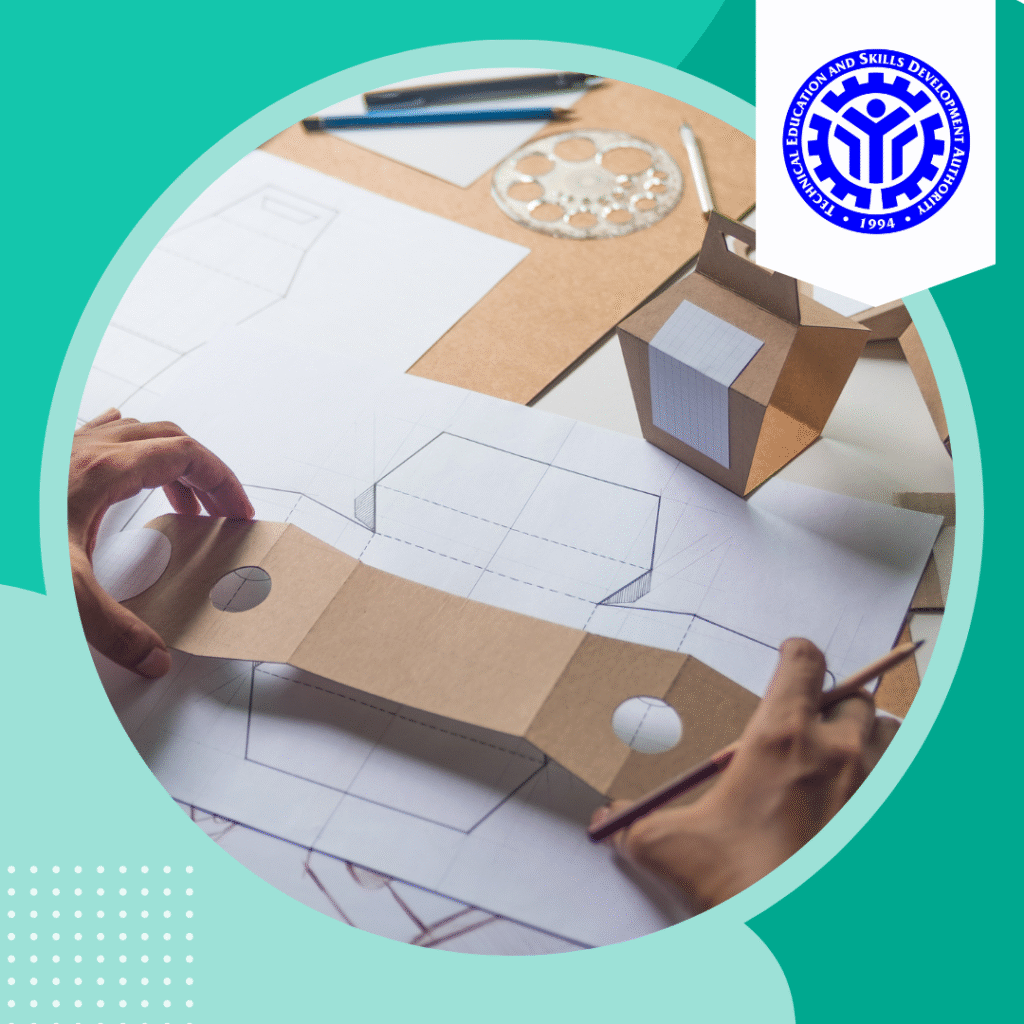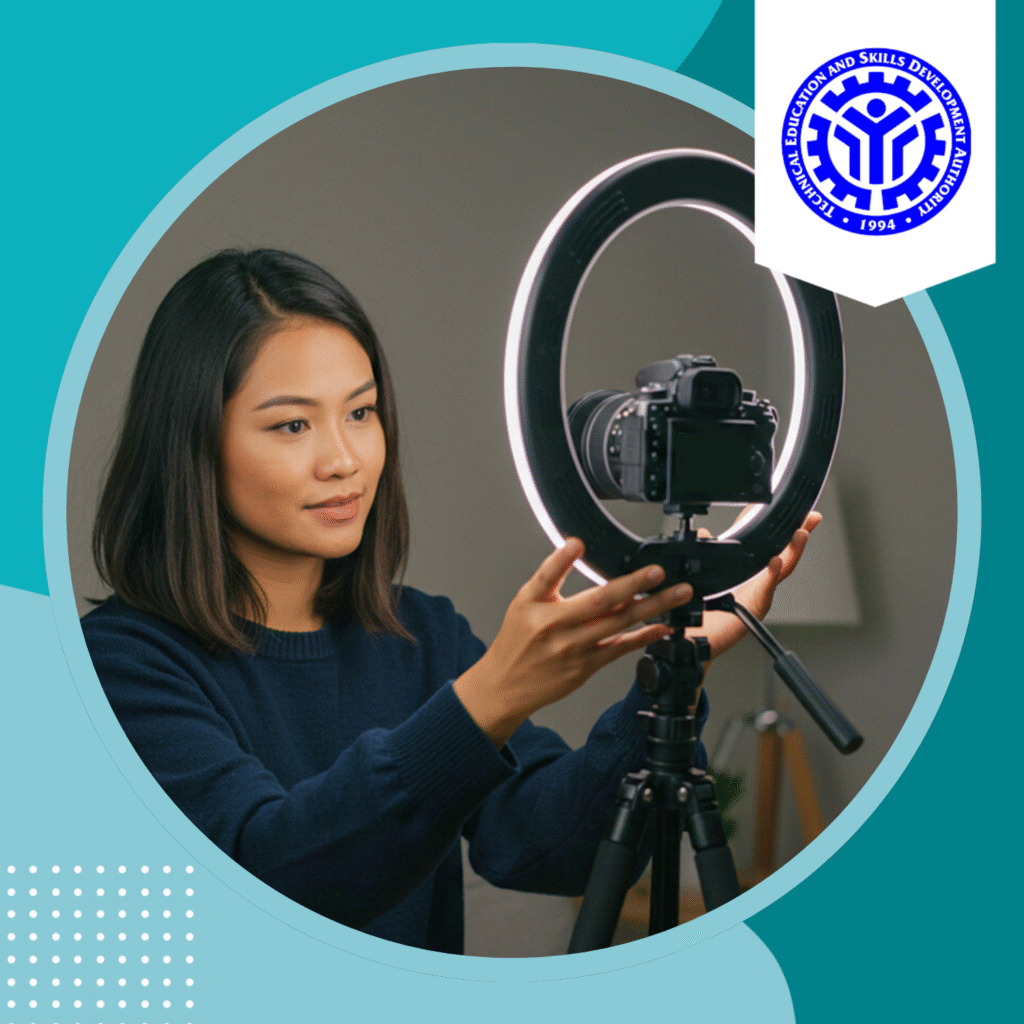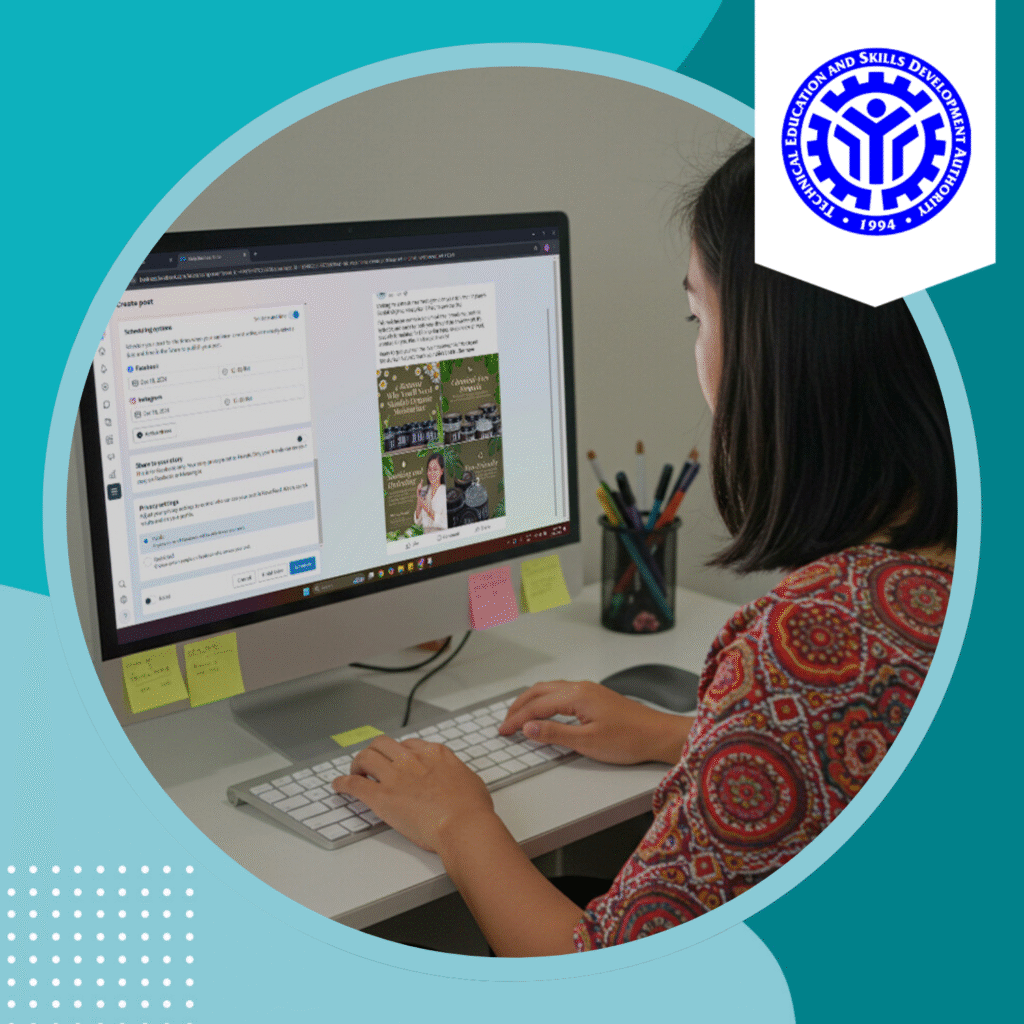In today’s fast-paced digital world, upskilling has become essential for individuals looking to stay competitive and relevant in their careers. TESDA Online Program offers a wide range of free courses designed to equip learners with the technical skills and knowledge needed in various industries. From graphic design to ICT and social media content creation, these courses provide flexible and accessible learning opportunities for Filipinos who want to enhance their expertise or explore new career paths.
Also read: List of TESDA Courses for Information Technology
Whether you’re a beginner exploring the basics or an experienced professional looking to upgrade your skill set, TESDA online courses cater to diverse needs. With programs like Visual Graphic Design NC III, SMART ICT, Content Creation (Social Media) Level III and IBM SkillsBuild, learners can gain practical, industry-relevant skills that align with current job market demands—all from the comfort of their homes.

Benefits
Here are some of the benefits of taking these Information and Communication Technology Online Courses by TESDA:
- Flexible Learning: TESDA online courses allow you to learn at your own pace and from the comfort of your home, making them ideal for busy individuals or those with limited access to physical training centers.
- In-Demand Skills: Courses like Visual Graphic Design NC III, SMART ICT, and Content Creation focus on highly sought-after skills in today’s digital and tech-driven job market.
- Career Advancement: Gain specialized training in areas like technopreneurship, Android app development, social media content creation, and UI/UX design to stand out professionally and enhance your career prospects.
- Entrepreneurial Mindset: Programs like SMART ICT not only teach technical skills but also provide training on business models, growth strategies, and spotting opportunities, empowering you to launch or manage your own business.
- Industry Partnerships: Courses like IBM SkillsBuild are backed by established brands, offering globally recognized skills training and increasing employability in competitive industries.
- Variety of Fields: Whether you’re interested in graphic design, ICT, mobile app development, or social media, TESDA offers a wide range of courses to suit different career goals.
- Access to Opportunities: With a focus on skill-building for underserved communities, programs like IBM SkillsBuild connect learners to career pathways and industry-specific training.
Visual Graphic Design NC III Online Course
The Visual Graphic Design NC III Online Course by TOP teaches you how to design logos, print media, UI/UX, packaging, and displays. Master advanced techniques to create impactful designs for any platform.

Modules
There are 7 modules covered in this course and these modules are required in order to pass the NC III assessment. These modules include:
Module 1: Introduction to Visual Graphic Design
This module offers an introduction to the basics of visual graphic design, including key concepts, principles, and techniques. Students will build a strong foundation in design theory and learn to effectively communicate messages through visuals.

Unit 1: Overview of Visual Graphic Design
Lesson 1: Introduction to Visual Graphic Design
Lesson 2: Fundamentals of Visual Graphic Design
At the end of the unit, you should be able to:
- Identify the roles and responsibilities of visual graphic designers;
- Explain the laws and legislation relevant to the VGD and ICT sector; and
- Apply the fundamentals of visual graphic design.
Unit 2: Practicing 21st-Century Skills in the Workplace
Lesson 1: Leading as a Management Function
Lesson 2: Working Effectively in a Diverse Environment
Lesson 3: Occupational Safety and Health, Environmental, and Entrepreneurial Work Practices
At the end of the unit, you should be able to:
- Lead as a management function
- Work effectively in a diverse workplace
- Evaluate occupational safety, health, environmental, and entrepreneurial work practices
Unit 3: Navigating an ICT Workplace
Lesson 1: Using Information Systematically
Lesson 2: Applying Quality Standards
At the end of the unit, you should be able to:
- Use information systematically
- Apply quality standards
Module 2: Developing Designs for a Logo
This module focuses on the process of developing designs for a logo. It covers various techniques and considerations to create visually appealing and effective logos.

Unit 1: Preparing for the Logo Design
Lesson 1: Receiving and Interpreting Logo Design Briefs
Lesson 2: Selecting Materials, Equipment, and Software to Develop Logo Design
Unit 2: Developing Logo Designs
Lesson 1: Conceptualizing and Developing Logo Designs
Lesson 2: Editing and Finalizing Logo Designs
Module 3: Developing Designs for Print Media
Developing Designs for Print Media: visually appealing designs for print. Covers design principles, techniques, tools, typography, color schemes, layout, and graphics. Gain hands-on experience creating print-ready designs.

Unit 1: Preparing for the Development of Print Media Designs
Lesson 1: Interpreting and Analyzing the Print Media Design Brief
Lesson 2: Preparing Equipment, Materials, and Software for Print Media Design
At the end of the unit, you should be able to:
- Interpret and analyze the print media design brief.
- Prepare equipment, materials, and software for print media design.
Unit 2: Developing Print Media Designs
Lesson 1: Developing Designs for the Specific Print Media Output
Lesson 2: Finalizing Print Media Design Output
At the end of the unit, you should be able to:
- Develop designs for the specific print media output.
- Finalize print media design output.
Module 4: Developing Designs for User Experience
Develop User-Centric Designs. Prioritize user satisfaction & engagement. Learn techniques for intuitive interfaces, user research, & testing. Enhance the overall user experience. Apply user-centered design principles effectively in your projects.

Unit 1: Preparing for the User Experience Design
Lesson 1: Receiving and Interpreting the User Experience Design Brief
Lesson 2: Selecting Media/Materials for User Experience Design
Unit 2: Developing the UX Design
Lesson 1: Producing Wireflow Designs
Lesson 2: Developing the Wireframe Design
Lesson 3: Finalizing the UX Design
Module 5: Developing Designs for User IPackaging
Create effective and appealing designs by understanding target audiences, incorporating branding elements, selecting materials, and creating visually compelling packaging. Attract consumers and communicate product value.

Unit 1: Preparing for the User Interface Design
Lesson 1: UI Design
Lesson 2: Selecting Tools, Delivery Platform, and Appropriate Software
Unit 2: Developing the UI Design
Lesson 1: Generating Design Ideas for User Interface
Lesson 2: Developing Designs for UI
Lesson 3: Finalizing the User Interface Design
Module 7: Designing Booth and Product/Window Display
Learn booth design, captivating displays, effective product showcasing, attracting customers, and creating immersive brand experiences. Topics include layout design, visual merchandising, lighting, signage, and materials utilization. Gain skills to create visually appealing displays that leave a lasting impression on your audience.

Unit 1: Preparing and Developing Booth and Product/Window Display Design
Lesson 1: Receiving and Interpreting the Booth and Product Window/Display Design Brief
Lesson 2: Developing Design Concepts for Specific Booth and Product Window/Display
At the end of the unit, you should be able to:
- Receive and interpret the booth and product window/display design brief.
- Develop design concepts for specific booths and product windows/displays.
Unit 2: Finalizing Design for Booth and Product Window/Display
Lesson 1: Finalizing Selected Design Using Precise Specifications Provided
Lesson 2: Producing 3D Model Images/View of the Approved Design
At the end of the unit, you should be able to:
- Finalize selected design using precise specifications provided.
- Produce 3D model images/view of the approved design.
Note: After completing each module, or specific modules, you’ll receive a certificate to acknowledge your achievements and showcase your expertise in the subject. These certificates testify to your dedication and commitment to ongoing learning.
SMART ICT Online Course
Master ICT skills with TESDA’s SMART ICT Online Course. Designed for beginners, it focuses on Android Mobile Apps Development and technopreneurship. The course includes two modules covering key areas like identifying opportunities, developing business models, and managing growth, combining technical skills with an entrepreneurial mindset.

What is ICT?
ICT or also known as Information and Communications Technology students learn how to effectively apply, use, and manage technology to solve information and communication-related problems. Classes focus on teaching students how to be effective users of technology with a human and organizational perspective.
Modules
In this course, there are 2 modules that will be covered, each with its own set of topics and activities.
Module 1: SMART Android Mobile Apps Development for Beginners
Lesson 1: Setting up the Development Environment
Lesson 2: Hello World Part 1
Lesson 3: Hello World Part 2
Lesson 4: Android Basics Part 1
Lesson 5: Android Basics Part 2
Lesson 6: Android Basics Part 3
Lesson 7: Android Basics Part 4
Lesson 8: Android Basics Part 5
Lesson 9: Android Basics Part 6
Lesson 10: Android Basics Part 7
Lesson 11: Preparing for Distribution
Module 2: SMART Technopreneurship 101
Lesson 1: Introduction to Technology Entrepreneurship
Lesson 2: The Start of an Entrepreneurial Journey
Lesson 3: The Business Model
Lesson 4: Product Development
Lesson 5: Customer Validation
Lesson 6: The Validation Board
Note: Upon completion of each module or specific modules, you will be awarded a certificate to recognize your accomplishments and demonstrate your expertise in the respective subject. These certificates serve as a testament to your unwavering dedication and commitment to continuous learning.
Skills to Learn
After completing this course, it is expected that participants will be able to:
Understand the concepts of Technopreneurship
Learn the different processes involved in Running a Technology-based Startup
Create a Business Plan for a Technology-based company
Present a Minimum Viable Technology Product (MVP)
Execute a Business Pitch for a Technology Product or Service
Tips for Developing ICT Skills
- Familiarize yourself with computer hardware, software, and operating systems.
- Explore platforms like Coursera, Udemy, or Codecademy for self-paced learning.
- Engage in hands-on activities and projects to reinforce your skills.
- Participate in forums and discussion groups to learn from others and seek guidance.
- Keep up with the latest trends and advancements in the field by following relevant blogs and websites.
- Attend industry events and connect with professionals to expand your opportunities.
- ICT skills take time to develop, so stay motivated and keep practicing.
These tips are just some of the ways to excel in the ICT industry. Being successful in this field requires a combination of technical knowledge, practical experience, and a growth mindset. In this section, we will delve deeper into each tip and provide additional insights to help you succeed in your ICT career.
Content Creation (Social Media) Level III Online Course
The Content Creation (Social Media) Level III online course by TESDA Online Program trains individuals to create and share engaging content for social media. It covers developing ideas, creating multimedia posts, and distributing them effectively. Perfect for those who prefer learning from home.
Modules
There are 4 modules in this online course, each with its own set of lessons to learn. The modules cover the following topics:
Module 1: Introduction to Content Creation
This self-paced course teaches you the essential knowledge, skills, and mindset needed to succeed as a content creator. You’ll learn about the content creation industry, key work habits, safety procedures, and how to thrive in the digital workspace.

Unit 1: An Overview of the Content Creation Industry
Lesson 1: Introduction to the Content Creation Industry
Lesson 2: Fundamentals of Content Creation
At the end of the unit, the learner should be able to:
- Describe the industry of content creation.
- Apply the fundamental principles of content creation.
Unit 2: Applying 21st-Century Skills in a Work Environment
Lesson 1: Demonstrating Leadership and Professionalism
Lesson 2: Practicing Occupational Work Environment Safety
At the end of the unit, the learner should be able to:
- Demonstrate leadership and professionalism.
- Practice occupational work environment safety.
Unit 3: Navigating an ICT Work Environment
Lesson 1: Utilizing Modern Information Technology
Lesson 2: Applying Quality Standards
At the end of this unit, the learner should be able to:
- Utilize modern information technology.
- Apply quality standards for content creation.
Module 2: Creating Concepts for Social Media
This course teaches you the basics of creating social media ideas. By the end, you’ll know how to research trends, develop and organize ideas, and turn them into a clear and effective script.

Unit 1: Conducting Research on Current Social Media Trends and Related Facts
Lesson 1: Conducting Trend Research
Lesson 2: Conceptualizing Current Trends
Lesson 3: Identifying Authentic Sources and References
At the end of the unit, the learner should be able to:
- Conduct trend research
- Conceptualize current trends
- Identify authentic sources and references relevant to the concept
Unit 2: Translating Concepts into Writing
Lesson 1: Organizing Gathered Concepts for Content Writing
Lesson 2: Developing an Effective Script
Module 3: Translating Concepts into Multimedia Contents
This course covers the knowledge, skills, and attitude that you must have in order to conduct pre-production , production, and post-production plans. By the end of this course, you should be able to prepare pre-production plans, including peopleware and storyboard, conduct production, and perform post-production.

Unit 1: Developing Pre-Production Plans
Lesson 1: Preparing Production Prerequisites
Lesson 2: Forming Peopleware and Practicing Team Dynamics
Lesson 3: Visualizing Script Through Storyboarding
At the end of the unit, the learner should be able to:
- Identify the production prerequisites
- Form the peopleware and practice team dynamics
- Visualize the script through storyboarding
Unit 2: Executing Multimedia Production and Post-Production
Lesson 1: Conducting Multimedia Production
Lesson 2: Performing Post-Production Stage
Lesson 3: Finalizing Multimedia Output for Propagation
At the end of this unit, the learners should be able to:
- Conduct multimedia production
- Perform the post-production stage
- Finalize multimedia output for propagation
Module 4: Propagating Content
This course teaches you how to share and promote your content on social media effectively. By the end, you’ll learn to create content strategies, manage audience engagement, build your brand presence, and measure content performance using key metrics.

Unit 1: Marketing Produced Content
Lesson 1: Marketing Concepts and Challenges
Lesson 2: Disseminating Produced Content to Target Audience
At the end of the unit, the learner should be able to:
- Identify the marketing concepts and challenges
- Disseminate produced content to the target audience
Unit 2: Performing Community Management
Lesson 1: Establishing Community and Brand Management
Lesson 2: Assessing Content Dissemination Performance
Lesson 3: Evaluating Marketing Performance and Strategies Used
At the end of this unit, the learners should be able to:
- Establish community and brand management
- Assess content dissemination performance
- Evaluate the marketing performance and strategies used
These four modules cover community and brand management, plus evaluating marketing success. Complete them to earn a certificate of completion.
IBM Skill Build Online Course
Enroll in IBM Skills Build and boost your skills with TESDA-recommended ICT courses! This free program supports underrepresented communities, offering adult learners, students, and faculty the chance to gain valuable skills. Access a variety of courses and career opportunities to stay competitive in today’s job market. Start building your future with IBM SkillsBuild today.

How to Avail
Step 1: Click HERE to register.
Step 2: Create and set up your account.
Step 3: After signing in, click on the TESDA widget to browse the top recommended courses and enroll for free.
Step 4: Upon completing courses in IBM SkillsBuild, you can receive digital badges. These badges can be used to showcase your newly acquired skills and knowledge on professional networks like LinkedIn or in your resume.
Step 5: Enroll and enjoy learning!
Also read: Full List of Courses under TESDA Online Program
Summary
The TESDA Online Program offers free, flexible courses to help Filipinos enhance their skills and stay competitive in various industries. With programs ranging from Visual Graphic Design and ICT to Social Media Content Creation and IBM , learners can gain practical, industry-relevant expertise for new career paths or skill upgrades—all accessible online.

